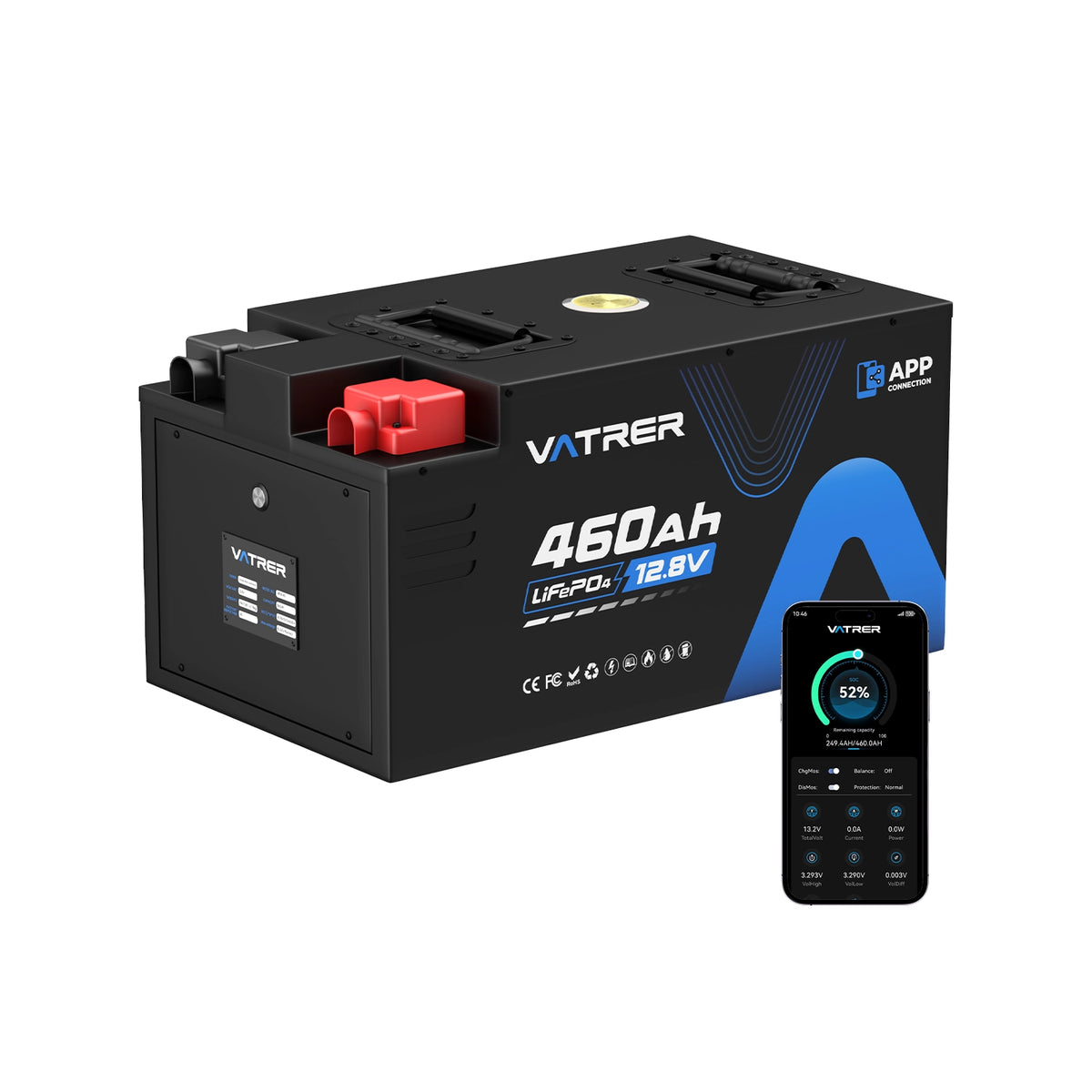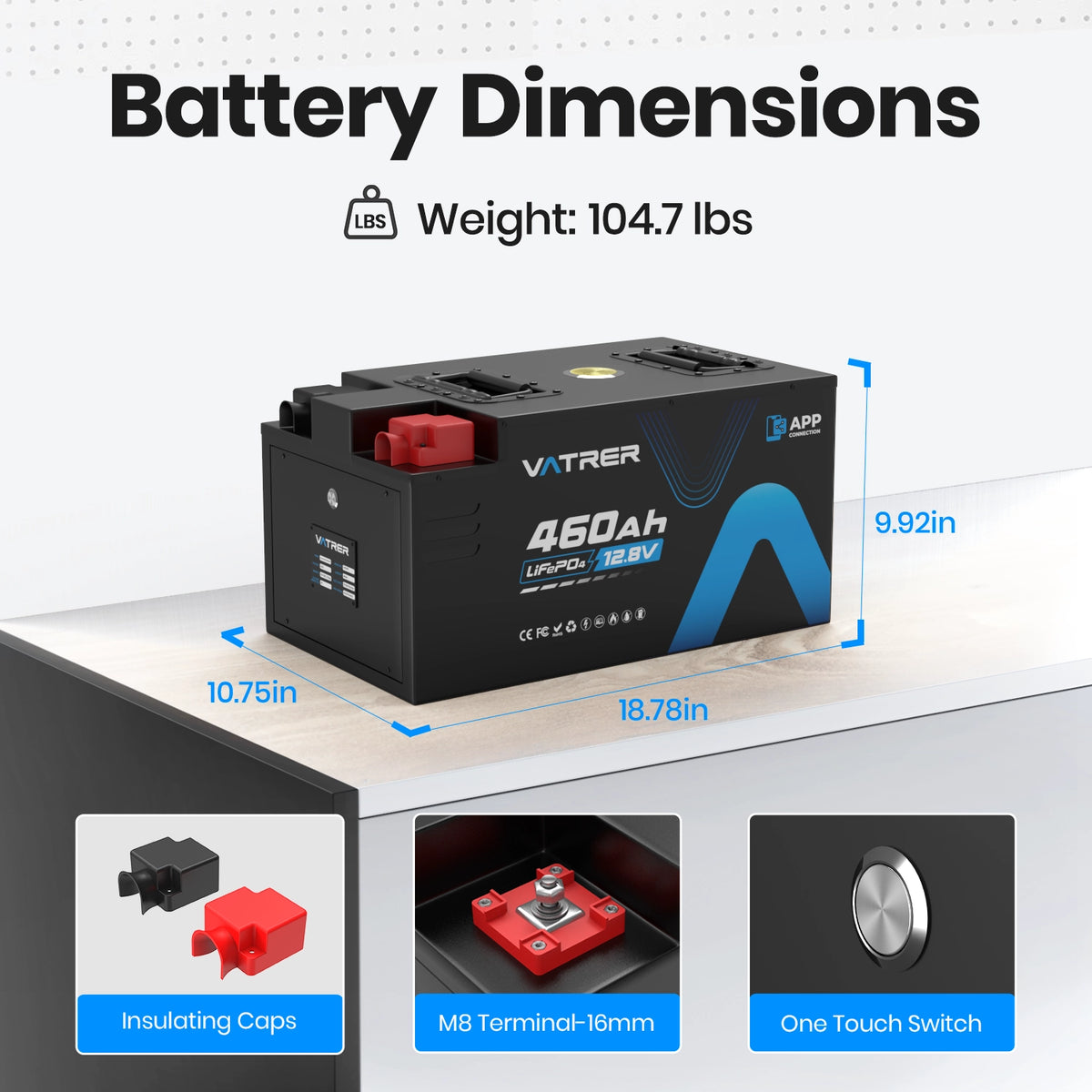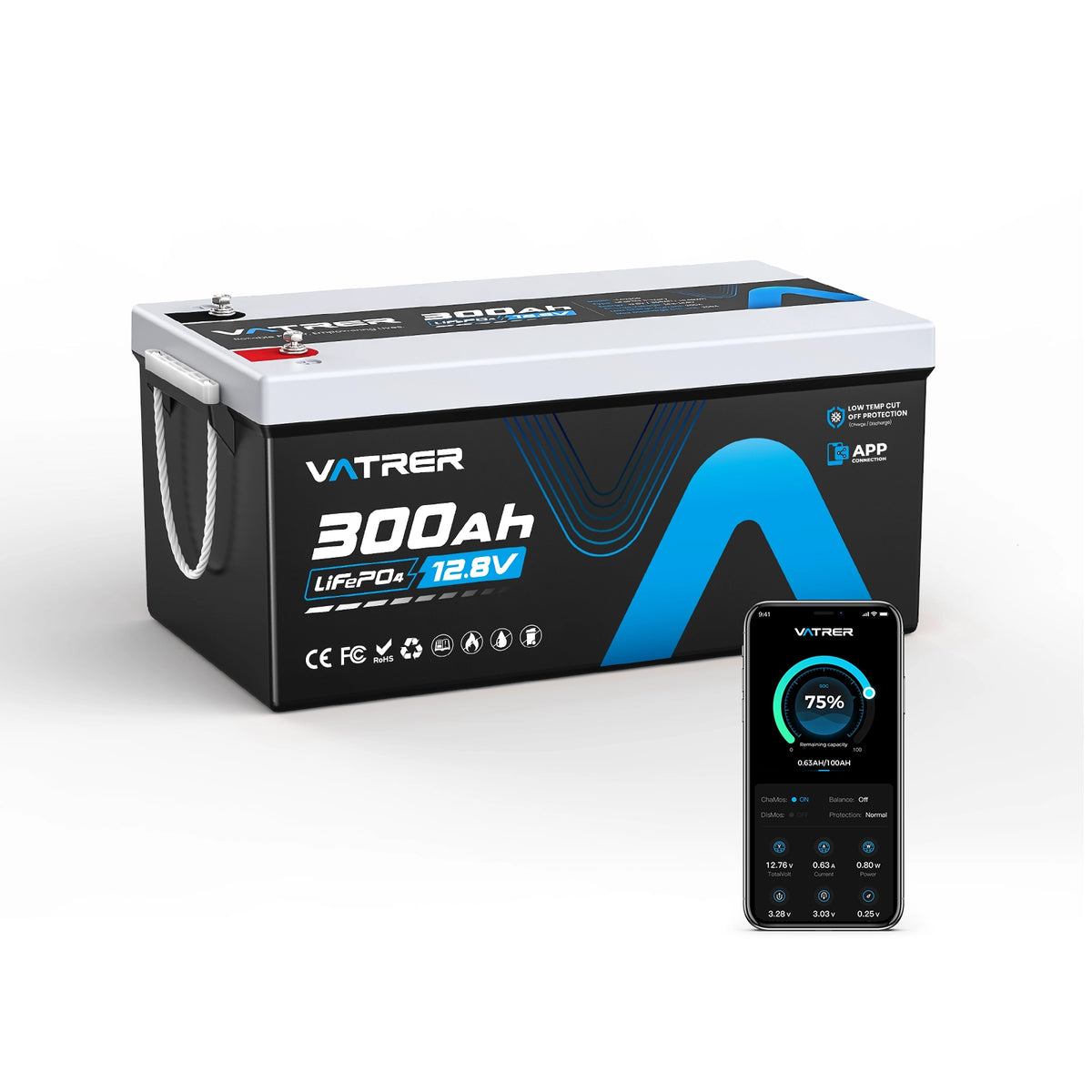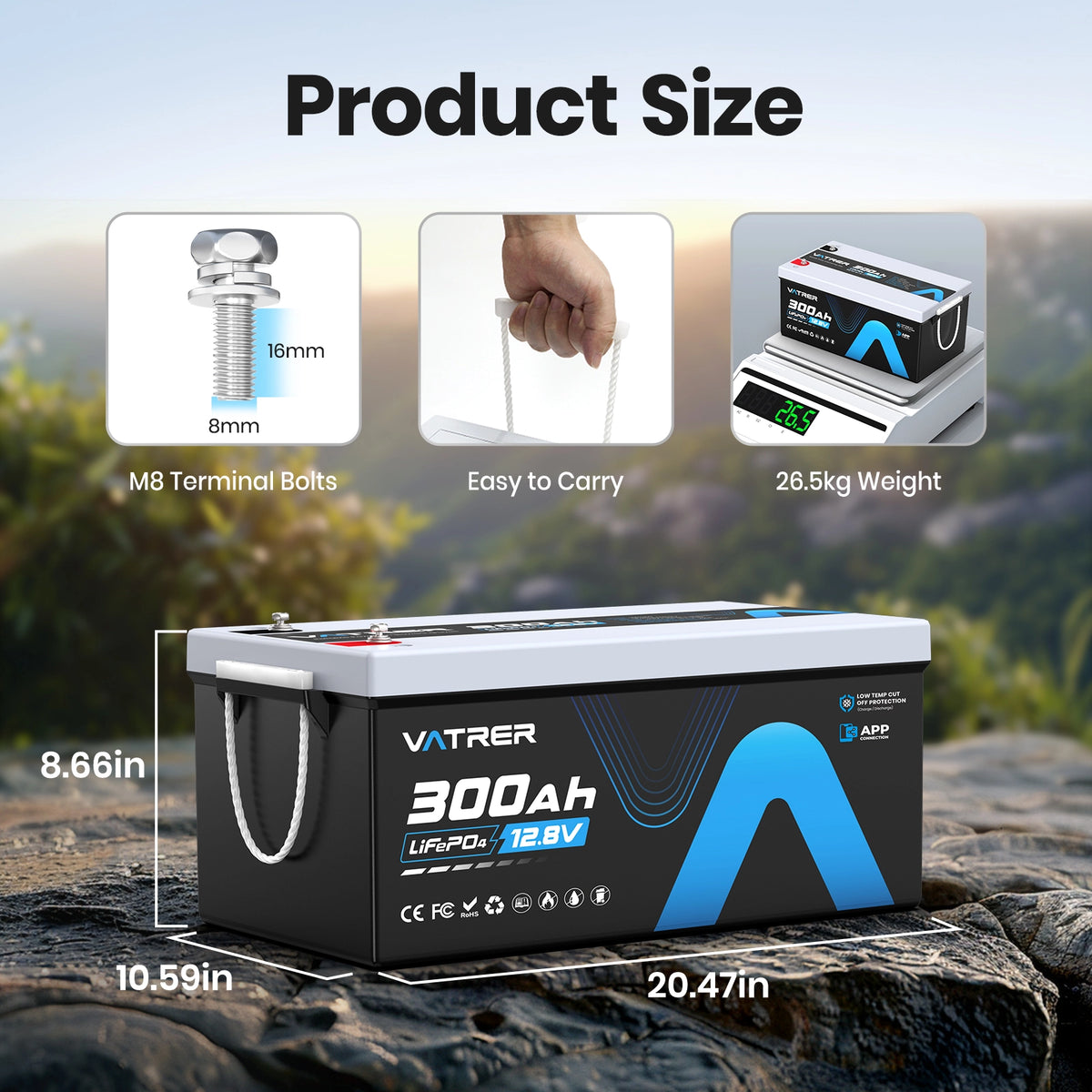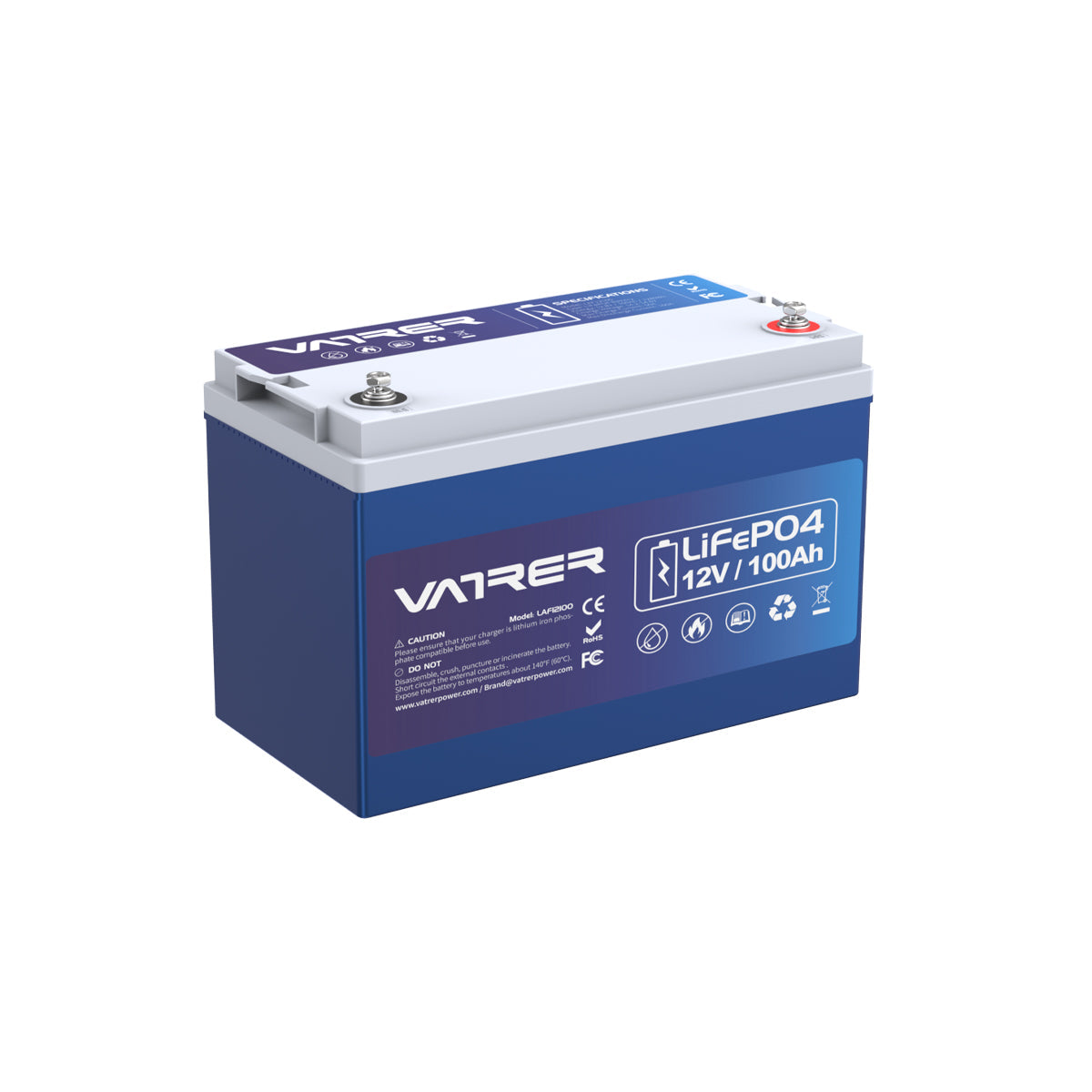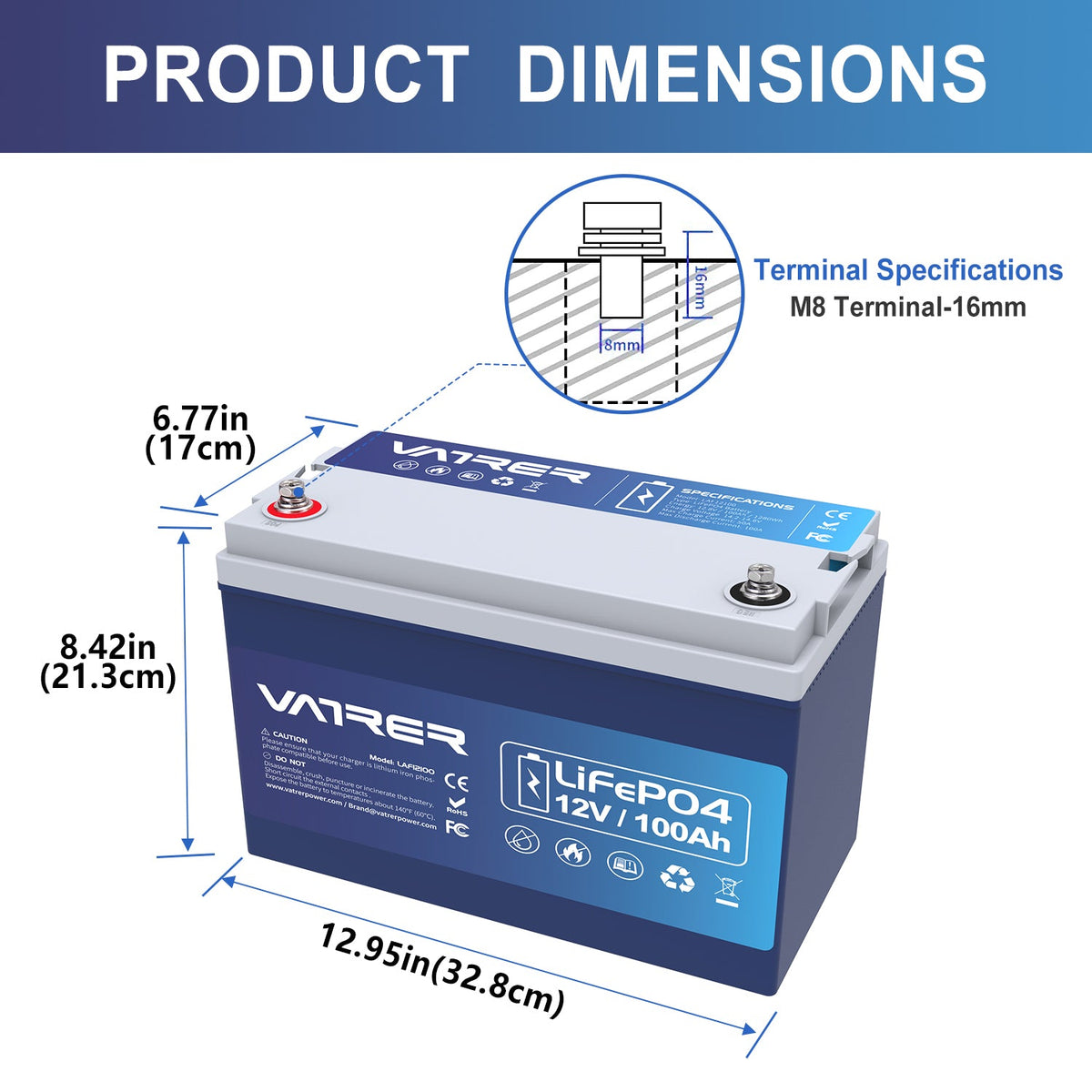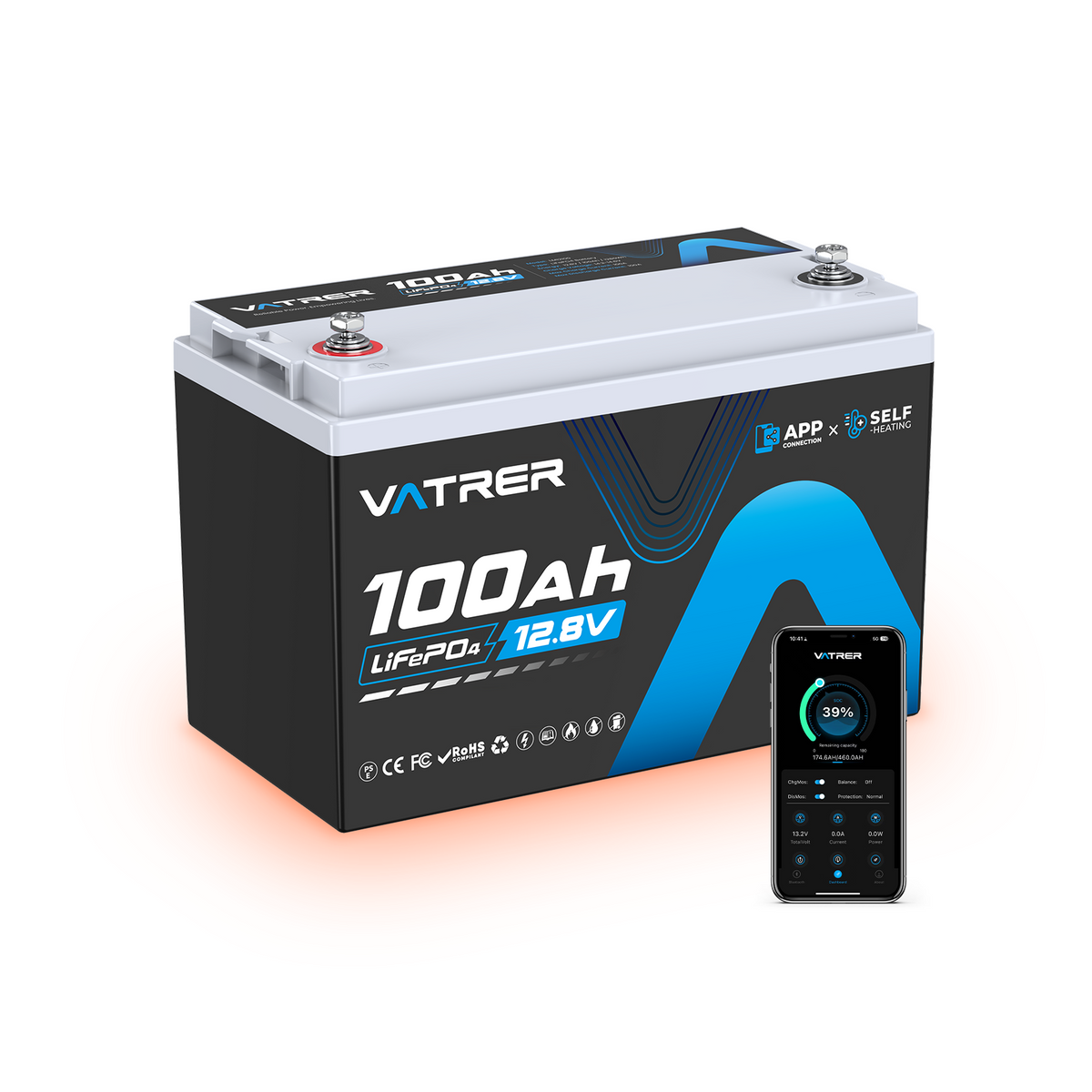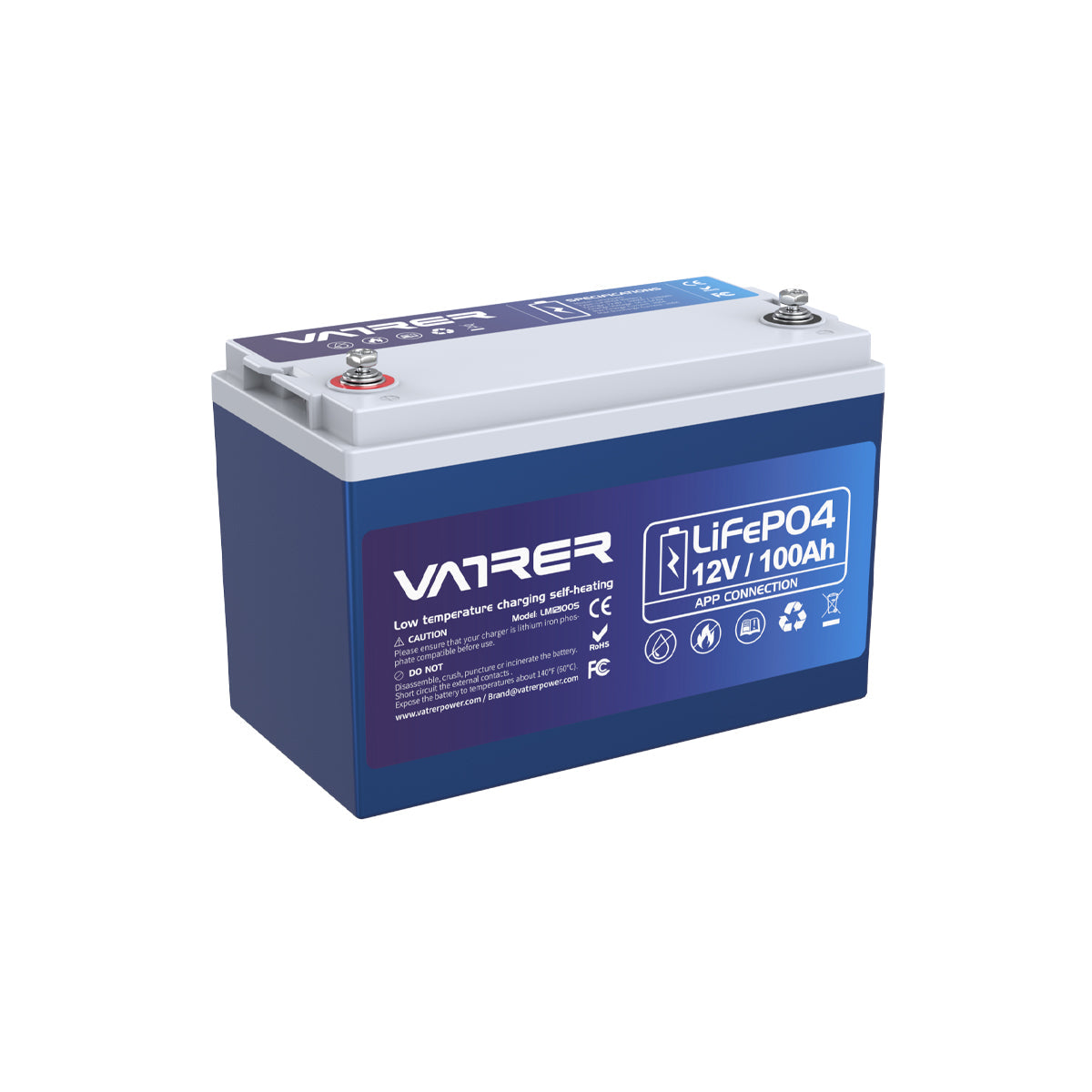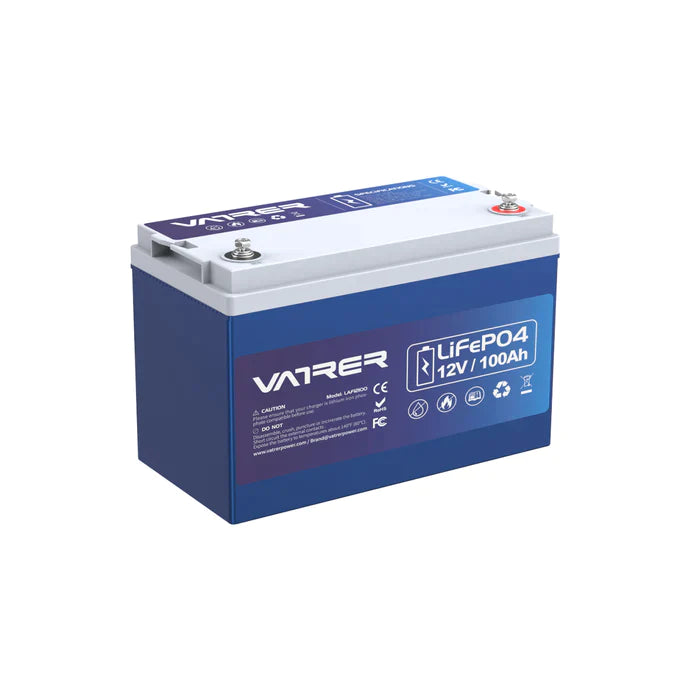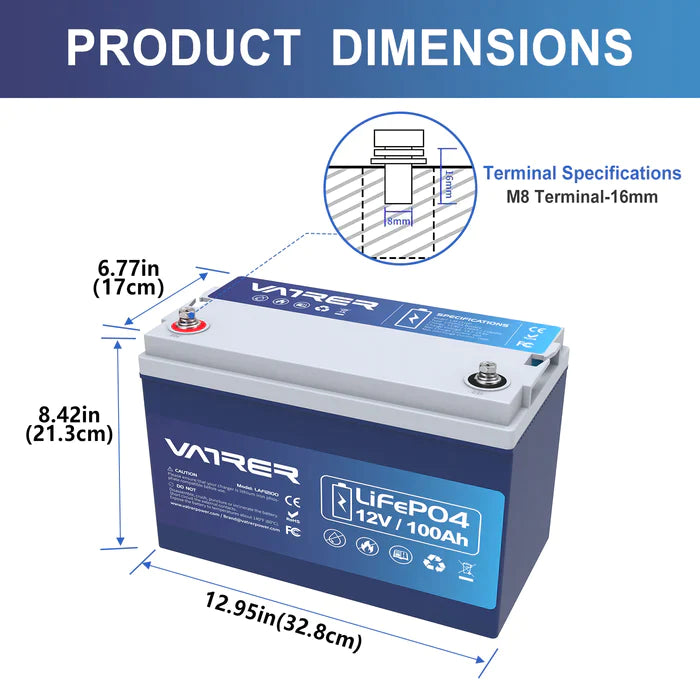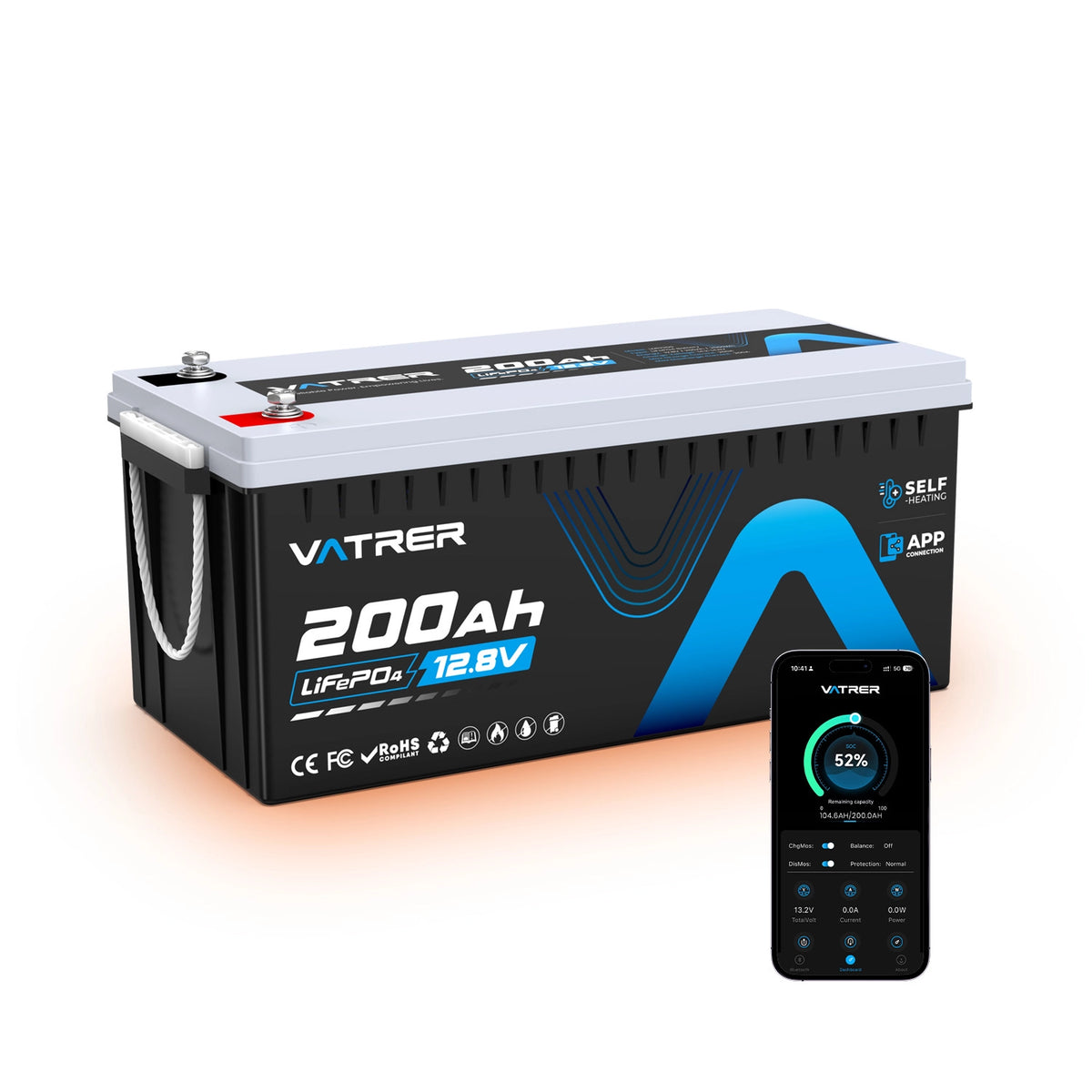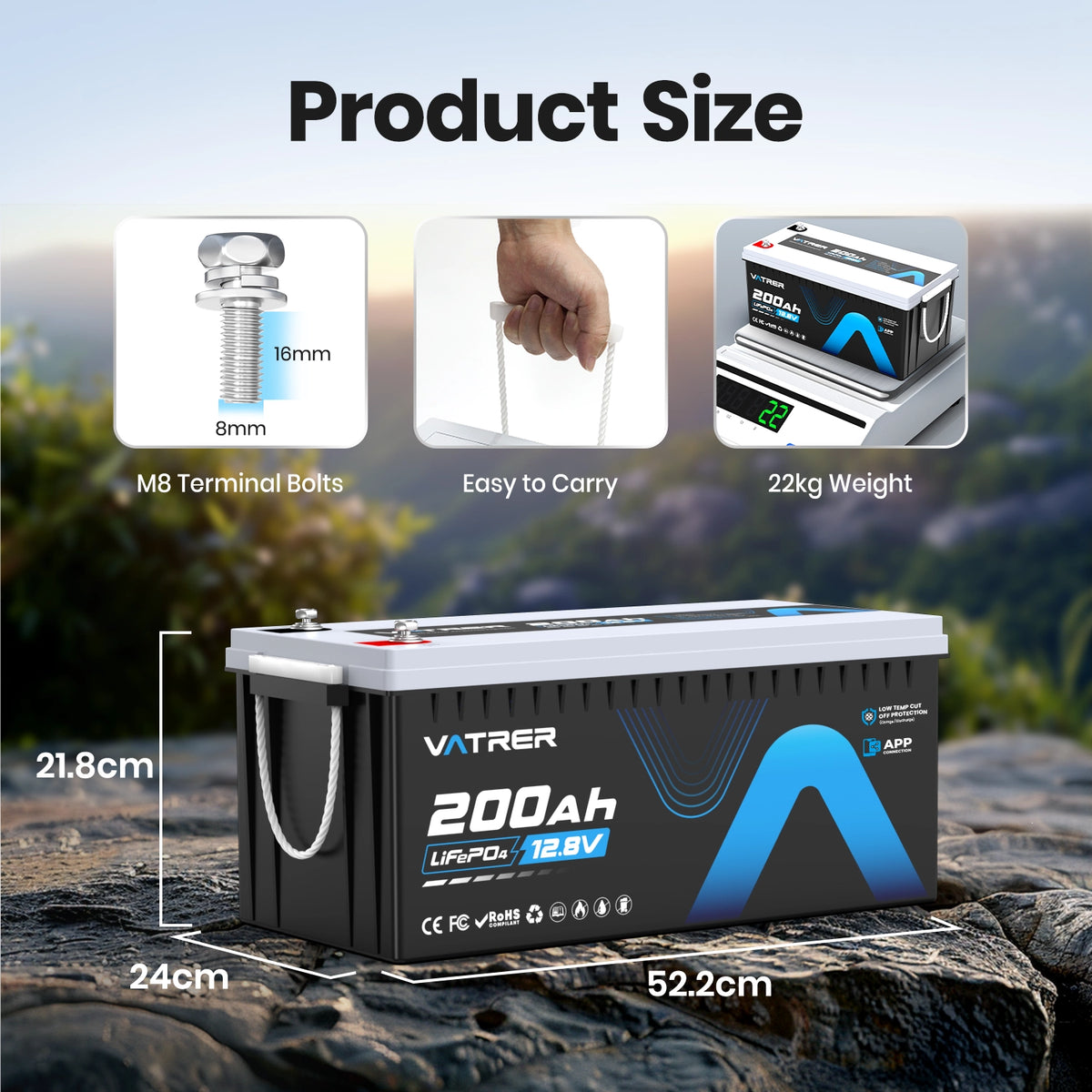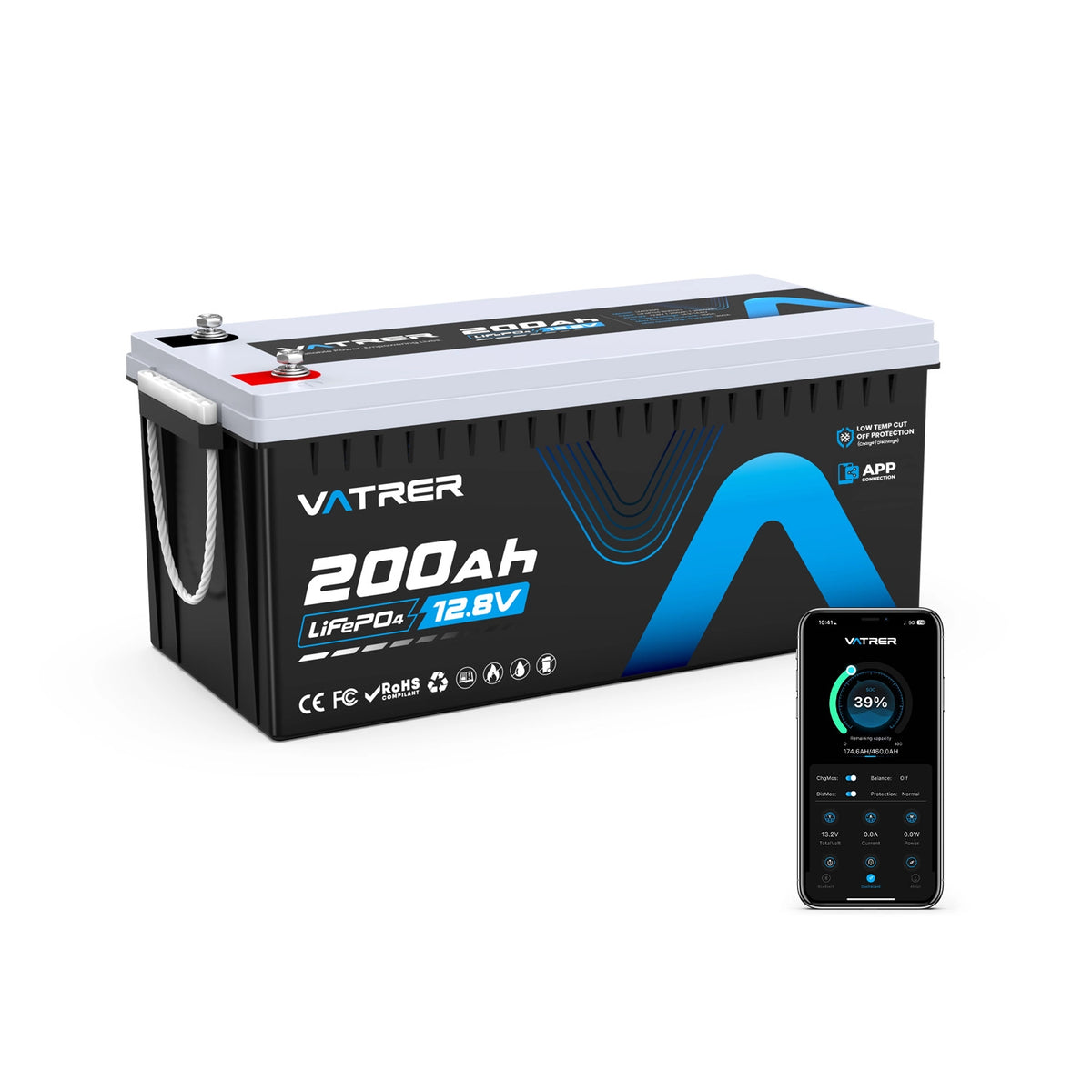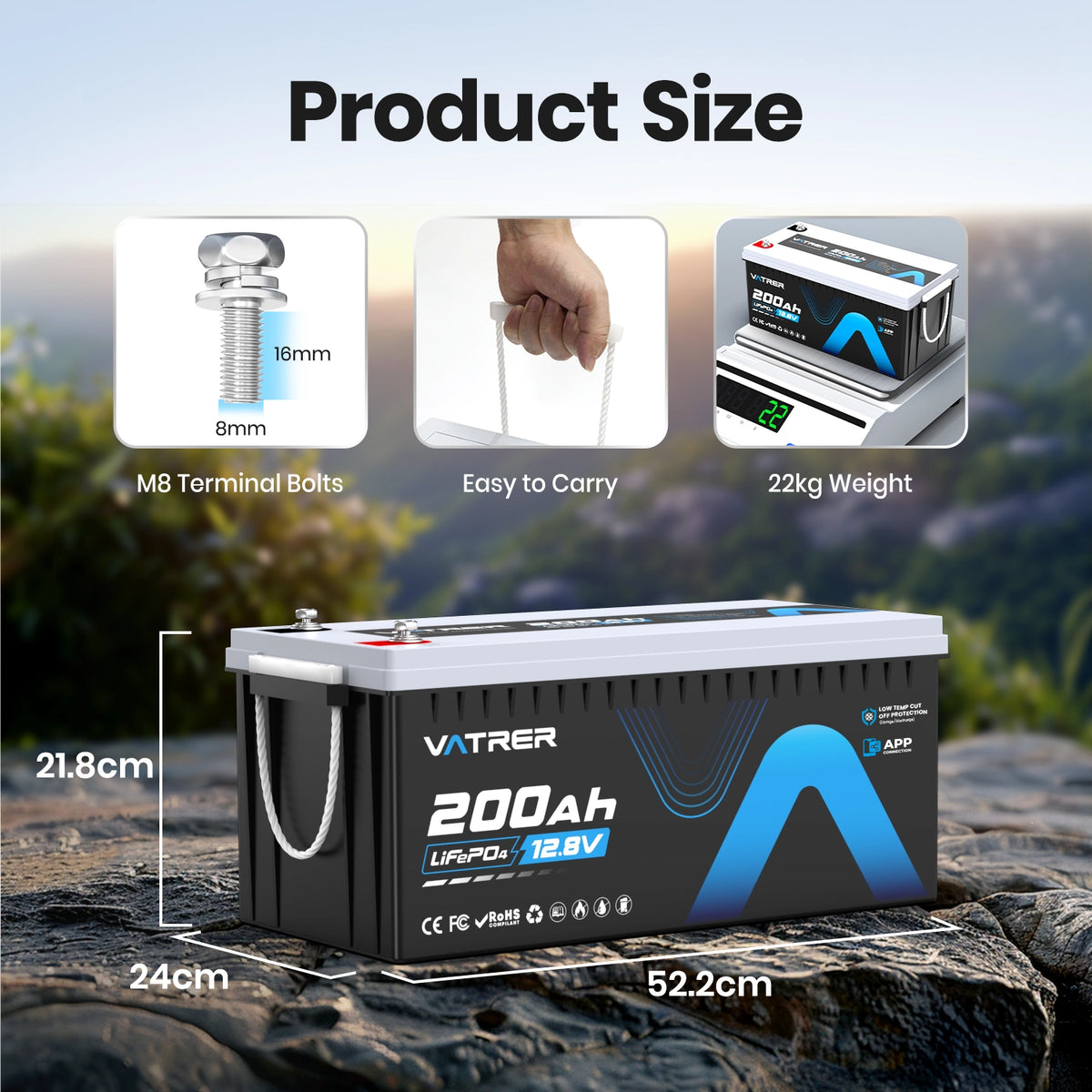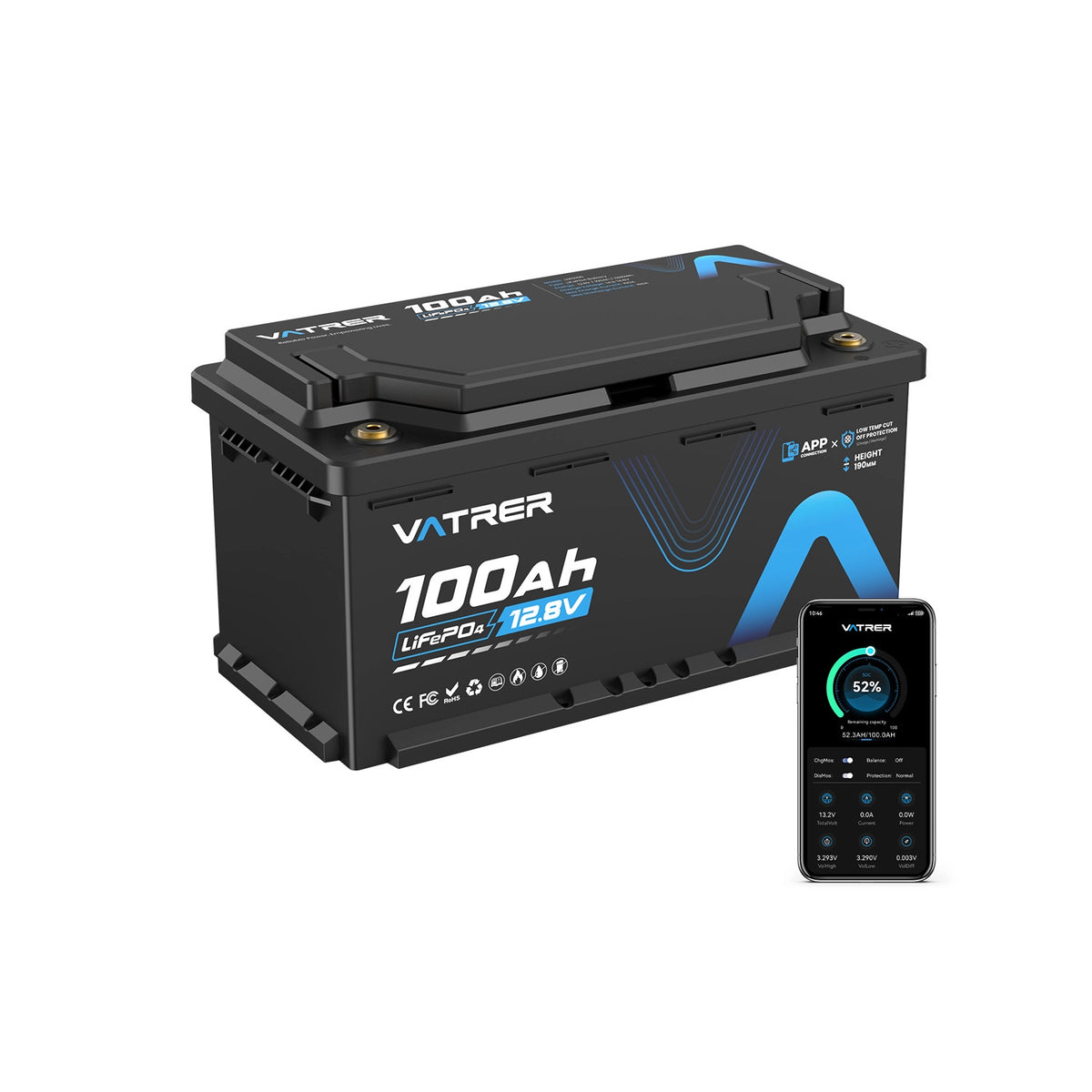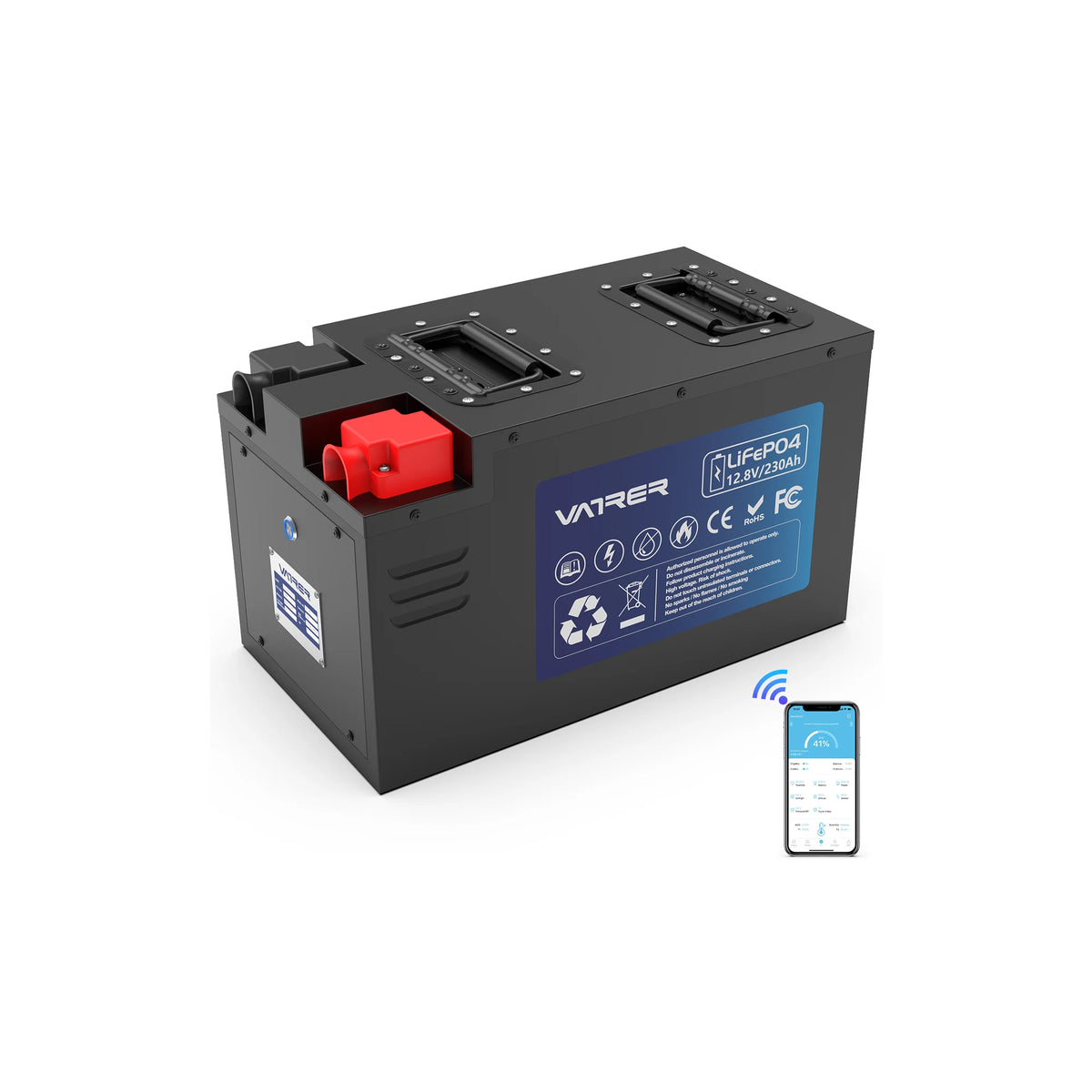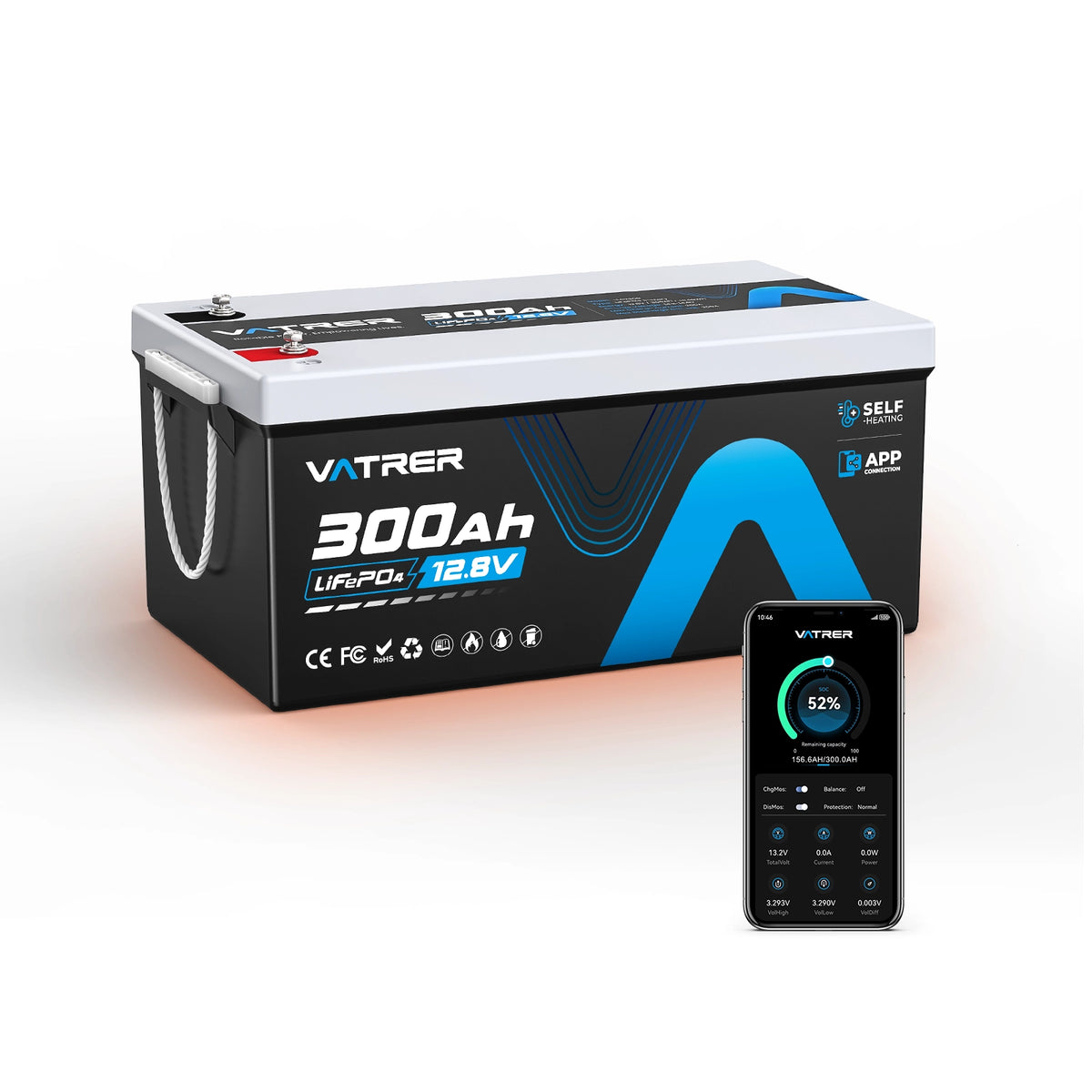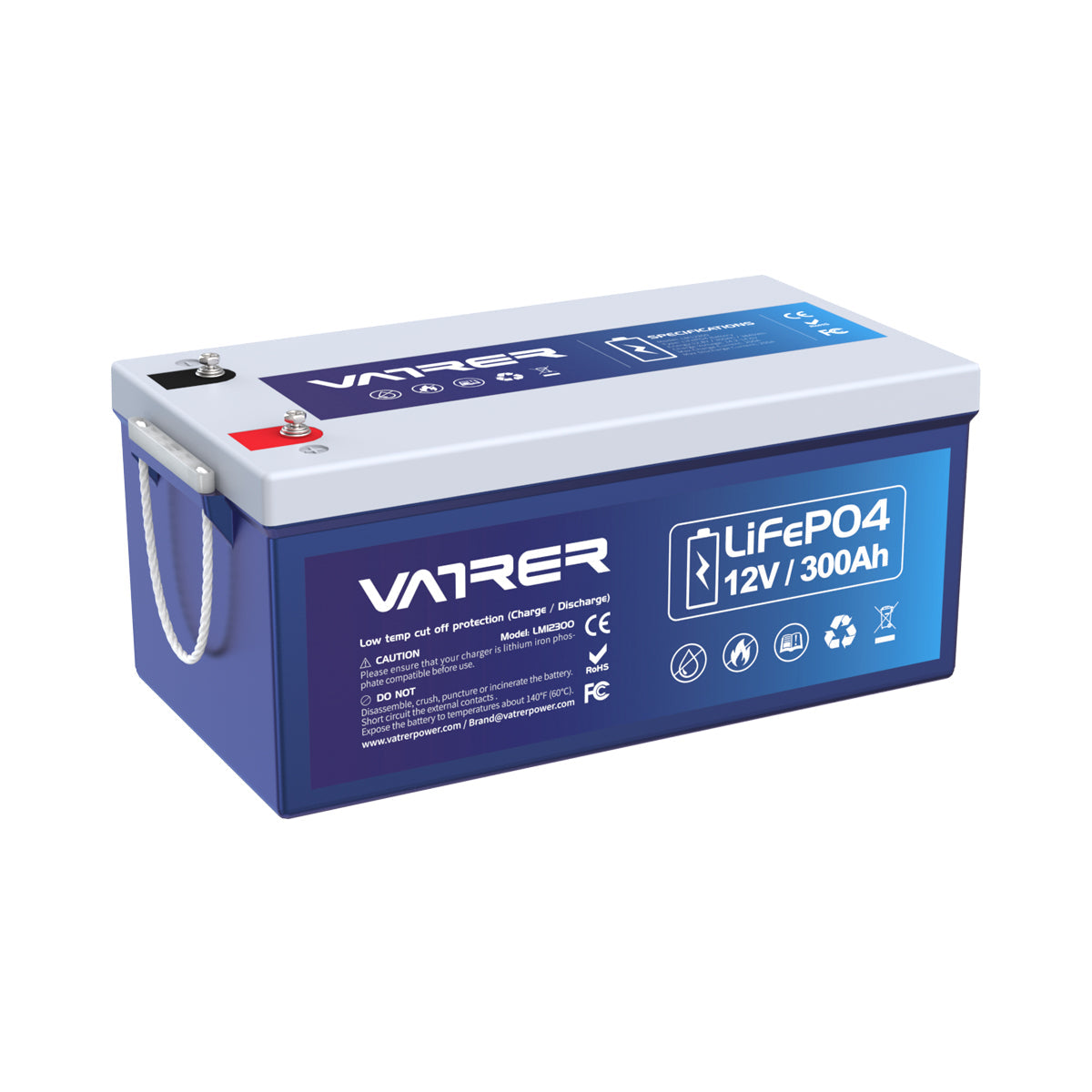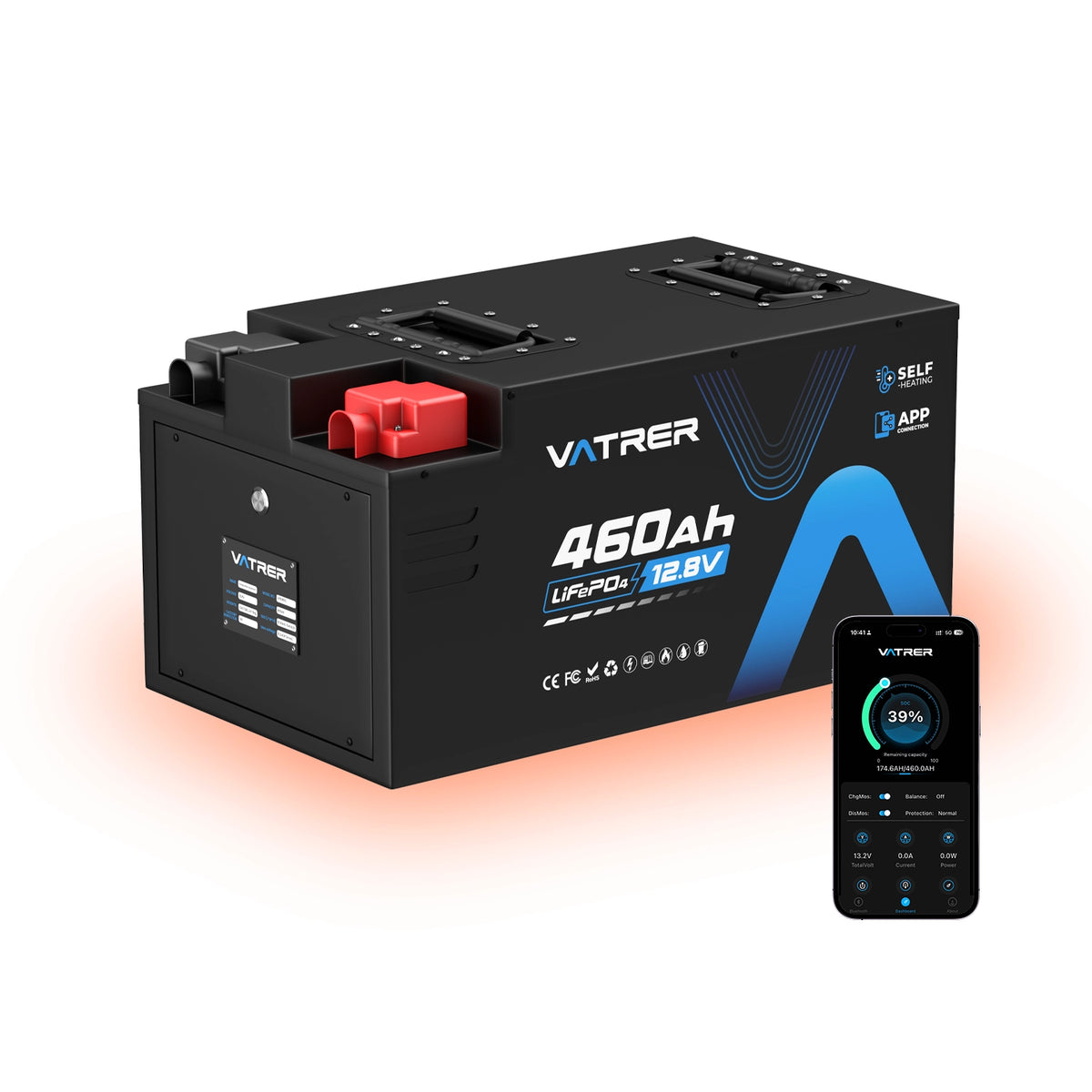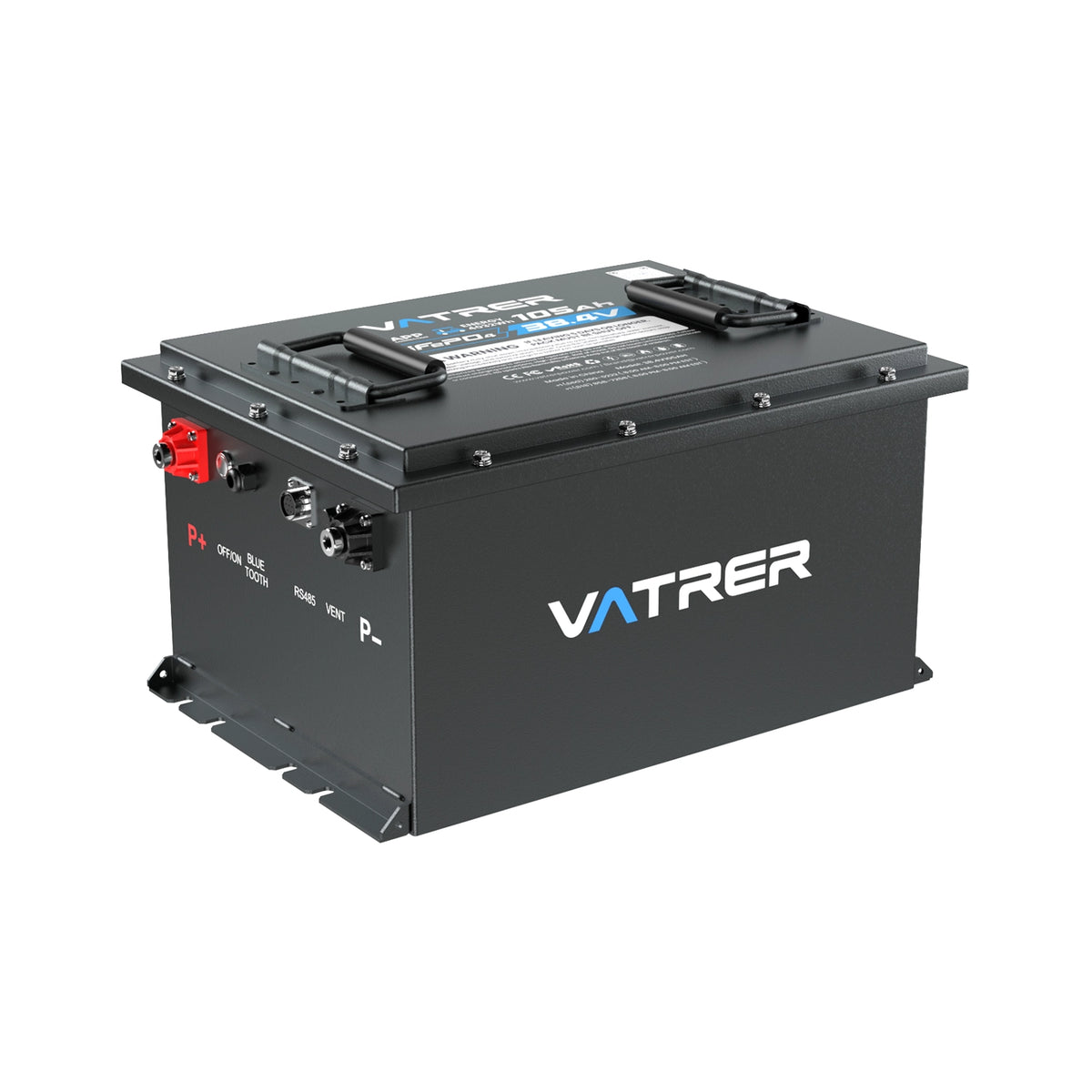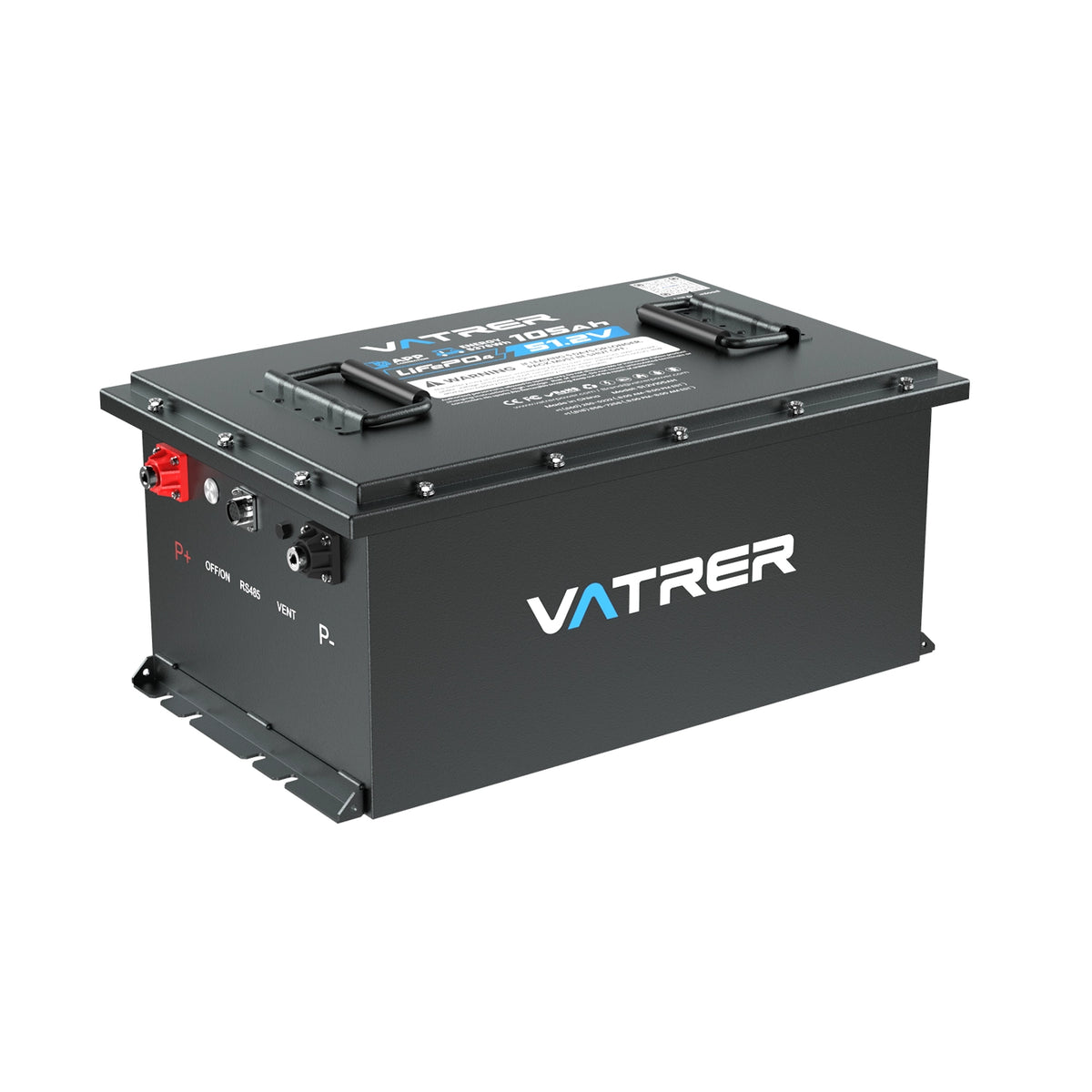As more and more people need to understand the energy storage industry, and batteries are the core of energy storage, Vatrer has compiled relevant materials and organized a straightforward set of resources for easy learning. We believe that after reading these materials, you will develop a relatively professional knowledge framework about batteries and become a semi-expert. We wish you a pleasant learning experience!
1. The Battery Family

Types of Batteries and Their Characteristics
Primary Batteries (Dry Cells)- Zinc-Carbon Batteries: These are the most basic type of batteries commonly found in everyday devices like remote controls and wall clocks. They are inexpensive but have a limited life span and low energy density.
- Lead-Acid Batteries: These are the most common and cost-effective type of rechargeable batteries. They are extensively used in vehicles for starting engines and in small electric vehicles for power. However, they are heavy and have a relatively poor energy density.
- Nickel-Cadmium (NiCd) Batteries: Once popular in early digital devices like large mobile phones ("bricks"), these batteries have significant environmental concerns due to the toxic heavy metals they contain. They also suffer from memory effect, leading to a decrease in efficiency with repeated use, and are now largely phased out.
- Nickel-Metal Hydride (NiMH) Batteries: These batteries are used in applications requiring high current discharge over short periods, such as in medical equipment and some hybrid vehicles. They offer a better energy density than NiCd batteries and are less harmful to the environment.
- Lithium-Ion Batteries: Widely used in modern portable electronics such as smartphones and laptops, and increasingly in electric vehicles, lithium-ion batteries offer high energy density and longer lifespans without the memory effect seen in NiCd batteries.
- Flow Batteries: These batteries use two chemical components dissolved in liquids, separated by a membrane. They are a promising technology for large-scale energy storage such as grid storage because they can theoretically be scaled up easily by increasing the size of the storage tanks. They are, however, still in the developmental stage for most mobile applications.
Each type of battery has its specific applications, advantages, and limitations, influencing its suitability for various uses across different sectors. As technology progresses, newer types of batteries like solid-state and advanced lithium-based batteries are expected to offer improvements in safety, energy density, and environmental impact.
The term "lithium battery" originally referred to lithium metal batteries, which are primary batteries. However, due to their propensity to explode, they are no longer in use. Today, when we speak of lithium batteries, we generally refer to lithium-ion batteries. The common AA and AAA batteries that we use daily are examples of dry cells. In the early days, large mobile phones, often referred to as "bricks," used nickel-metal hydride batteries. Small electric vehicles typically use lead-acid batteries, which are often packed together in groups of four, arranged neatly in a square formation. Meanwhile, our smartphones, laptops, and even electric cars predominantly use lithium-ion batteries.
Comparison of Main Electrochemical Energy Storage Batteries
|
Battery Type |
Specific Energy (Wh/kg) | Specific Power (W/kg) | Cycle Life (thousands) | System Cost ($/kWh) | Cost per kWh ($/kWh) | Charge-Discharge Efficiency (%) | Safety | Advantages | Disadvantages |
|---|---|---|---|---|---|---|---|---|---|
| Lithium-Ion Battery | 75-250 | 150-315 | 2.5-5 | 350-560 | 0.126-0.168 | 85-98 | High | High specific energy, good cycle performance, high charge-discharge efficiency | High cost, sensitivity to overcharging and deep discharging, safety enhancements needed at low temperatures |
| Lead-Carbon Battery | 30-60 | 75-300 | 2-4 | 175-252 | 0.063-0.098 | 80-90 | Medium | Good cycle performance, low cost per kWh, recyclable | Lead pollution, low specific energy, high space requirements |
| Flow Battery (Vanadium, Zinc-Bromine) | 15-85 | 50-170 | 2-10 | 280-840 | 0.098-0.168 | 60-75 | Medium | Vanadium is safer, low maintenance cost, scalable | Zinc-Bromine can have vapor leakage risks, high space requirements |
| Sodium-Sulfur Battery | 150-240 | 90-230 | 2-3 | 280-420 | 0.126-0.168 | 70-85 | Medium | High specific energy, high power output, environmentally friendly | High operational temperature, dangerous in overcharge and deep discharge conditions, sodium leakage risks |
2. Battery Terminology Explained
SOX: Full term is "State Of X," where X can represent various aspects of a battery's status:
-
H stands for Health
-
C stands for Capacity
-
P stands for Power
-
E stands for Energy
This is analogous to describing an engine's specifications such as displacement, power, energy, and operational time. Essentially, SOX provides a comprehensive status of the battery's current operational parameters.
SOC (State of Charge): This refers to the level of charge that a battery holds at any given time, similar to the amount of water in a bucket. A fully discharged battery has an SOC of 0, while a fully charged battery has an SOC of 1. It’s calculated as the available capacity divided by the actual capacity.
DOD (Depth of Discharge): This indicates how deeply a battery has been discharged. If the battery is fully charged, its DOD is 0. If it's completely discharged, the DOD is 1. Thus, under normal conditions, the DOD is a value between 0 and 1. The relationship between DOD and SOC can be expressed as: DOD + SOC = 1.
SOH (State of Health): This refers to the present actual capacity of the battery compared to its initial rated capacity. As the battery ages, its SOH will decrease. SOH is commonly assessed based on capacity and internal resistance. The most cited definition of SOH, based on capacity decay, is as follows:
where:
- is the current capacity of the battery
- is the battery's rated capacity
3. Lithium Battery Classification
Based on Practical Performance:
-
Power Type: These batteries are designed for short bursts of high power output, suitable for applications requiring quick energy discharge.
-
Energy Type: These are optimized for long-duration energy storage, ideal for applications that need sustained energy delivery over longer periods.
Based on Physical Form:
-
Cylindrical: These batteries are shaped like cylinders.
-
Prismatic (Steel/Aluminum casing): These have a rectangular or square shape and are encased in steel or aluminum.
-
Pouch (Aluminum plastic film): These batteries use a flexible, aluminum-plastic film casing.
Based on Electrolyte Material:
-
Liquid Lithium-Ion Battery (LIB): These batteries use a liquid electrolyte and are commonly used in power applications.
-
Polymer Lithium-Ion Battery (PLB): These replace the liquid electrolyte with a solid polymer electrolyte, which can be either 'dry' or 'gel-like,' with most using a polymer gel electrolyte. Strictly speaking, solid-state batteries refer to those where both the electrodes and the electrolyte are solid.
Based on Cathode Material:
-
Lithium Iron Phosphate (LFP): Known for safety and long cycle life.
-
Lithium Cobalt Oxide (LCO): Known for high energy density but relatively short life spans.
-
Lithium Manganese Oxide (LMO): Offers a balance between power and capacity.
-
Binary Batteries: Lithium Nickel Manganese Oxide (LiNiMnO2) / Lithium Nickel Cobalt Oxide (LiNiCoO2).
-
Ternary Batteries: Lithium Nickel Cobalt Manganese Oxide (NCM) and Lithium Nickel Cobalt Aluminum Oxide (NCA).
Based on Anode Material:
-
Lithium Titanate (LTO): Known for rapid charging and high cycle stability.
-
Graphene Battery: Utilizes graphene for increased conductivity and capacity.
-
Nano-Carbon Fiber Battery: Uses nano-scale carbon fibers, enhancing surface area and conductivity.
This classification outlines various types of lithium batteries, each suited for different applications based on their performance characteristics, physical designs, and material compositions.
18650 Battery
The 18650 is a model of lithium-ion battery, similar to the standard sizes of dry cells like AA, AAA, and C batteries. The 18650 was the original lithium-ion battery model established by Sony in Japan as a cost-saving measure. It adheres to a standardized format where '18' represents the diameter of 18mm, '65' denotes a length of 65mm, and '0' indicates a cylindrical shape. Common types of 18650 batteries include lithium-ion and lithium iron phosphate (LiFePO4) variants. Lithium-ion 18650 batteries typically have a nominal voltage of 3.7V, a charge cut-off voltage of 4.2V, and capacities ranging from 1200mAh to 3350mAh. Lithium iron phosphate batteries have a nominal voltage of 3.2V, a charge cut-off voltage of 3.6V, and typical capacities range from 2200mAh to 2600mAh.
Advantages of the 18650 Battery:
-
Standardization: The 18650 battery is the earliest, most mature, and most stable type of lithium-ion battery. Japanese manufacturers have achieved a high standard of consistency, making it easy to replace individual cells if issues arise.
-
Safety: 18650 batteries generally use a steel casing, which offers better safety against potential collisions. Additionally, the safety of these batteries has improved over time with advancements in manufacturing processes. Although steel-cased lithium batteries can be prone to explosion, modern 18650 cells are designed with safety valves. These not only release excessive internal pressure but also physically disconnect the cell from external circuits, effectively isolating the problematic cell to ensure the safety of other cells in the battery pack.
However, other battery types also have advantages. For instance, polymer lithium batteries are relatively safer, with higher energy density, and they do not explode under worst-case scenarios, typically burning instead. They can be custom-designed, though this increases research and development costs and reduces universality.
Lithium Iron Phosphate Battery (LFP)
Lithium Iron Phosphate (LiFePO4), also known as LFP, is a type of cathode material used in lithium-ion batteries. Characterized by the absence of cobalt and other expensive elements, it is cost-effective due to the abundant availability of its components—phosphorus, lithium, and iron—in the Earth's crust, ensuring a steady supply of materials. LFP batteries offer a moderate working voltage (3.2V), high capacity (170mAh/g), high discharge power, rapid charging capabilities, and a long cycle life. They also maintain high stability under high temperature and heat conditions.
4. Lithium-Ion Battery Voltage and Capacity
The voltage of lithium-ion batteries varies with the discharge current, ambient temperature, and the materials used for the anode and cathode.

This graph represents the discharge curves of a Panasonic 2550mAh lithium-ion battery using lithium cobalt oxide as the cathode material. The three curves, from top to bottom, depict the changes in voltage and capacity at three different discharge currents.
During the charging and discharging process, the voltage continuously changes. Taking 490mA as an example, the battery's open-circuit voltage is 4.2V when fully charged. As the discharge progresses, the voltage (vertical axis) gradually decreases, and the discharged capacity (horizontal axis) increases until the voltage sharply drops at 3.5V. Although the voltage changes throughout the discharge process, for simplicity, the average voltage of 3.7V during the steady discharge phase is marked as the battery voltage. This voltage is also referred to as the nominal voltage.
The voltage measured here is under low current and room temperature conditions, and it decreases with an increase in discharge current and a decrease in temperature.
Another important factor affecting battery voltage is the materials used for the anode and cathode. The aforementioned Panasonic battery uses lithium cobalt oxide and graphite for the cathode and anode, respectively, which were standard materials in the lithium battery industry in previous years. With the application of new materials in batteries, some lithium batteries of 3.6V or 3.8V have emerged in recent years. These batteries use different cathode materials and compared to lithium cobalt oxide batteries, they can increase energy density, meaning they store more energy per unit weight and volume.
| Type of Battery | Charge Cut-off Voltage | Nominal Voltage | Discharge Cut-off Voltage |
|---|---|---|---|
| Lithium-Ion Battery | 4.2V | 3.7V | 2.7V |
| Lithium Iron Phosphate Battery | 3.6V | 3.2V | 2.0V |
Battery Capacity: Rated Capacity and Actual Capacity
Battery capacity is generally categorized into actual capacity and rated capacity:
- Actual Capacity: This refers to the actual amount of electricity a battery discharges under specific discharge conditions. The actual capacity is always lower than the theoretical capacity.
- Rated Capacity: This is defined during the design and manufacturing of the battery as the minimum amount of electricity that the battery should discharge under certain conditions.
Battery capacity is commonly measured in ampere-hours (Ah), with individual cells often marked in milliampere-hours (mAh) for convenience. For instance, if a battery's rated capacity is 1300mAh, it implies that the battery can discharge a current of 130mA for 10 hours (1300mAh / 130mA = 10h). This calculation assumes an ideal scenario where the discharge current remains constant, which is unlikely in real-world applications involving digital devices.
The capacity of 18650 lithium batteries typically ranges from 1200mAh to 3600mAh.
In the context of smartphone batteries, the unit of measurement is mAh. High school science teaches us that this is a unit of electric charge, and to convert it into a unit of energy, it must be multiplied by the voltage.
Method of Calculating Battery Capacity:
Q=It
Battery Energy Calculation Method:
W=UIt
Why is energy consumption measured in a unit of electric charge in devices like smartphones? This is primarily because, to minimize the size of batteries, lithium-ion batteries in portable electronic devices like smartphones use lithium cobalt oxide for the cathode. This cathode material has a high packing density. Since the cathode material used in smartphone batteries is uniform, the battery voltage is relatively consistent (theoretically 3.7V, although this can vary slightly depending on the manufacturing process of different producers). Furthermore, smartphones typically contain only a single cell battery (recent exceptions include a smartphone model that has two 2000mAh batteries). Thus, measuring capacity alone is generally sufficient to gauge the amount of energy a battery can store.
However, computer batteries often display both capacity (charge) and energy. This is because computers do not just have one single battery; they contain multiple batteries configured in series and parallel to form a battery pack, hence capacity alone cannot be used to measure energy storage. High school physics teaches us that: for batteries of the same model, when batteries are connected in parallel, the voltage of the battery pack remains unchanged but its capacity increases; when batteries are connected in series, the capacity of the battery pack remains unchanged but its voltage increases.


Let's take this laptop that I have on hand as an example. The specifications are listed as "57.4Wh/7565mAh@7.6V (typical capacity)." This indicates that the battery pack is composed of four lithium-ion batteries, each with a capacity of 3782.5mAh and a voltage of 3.8V, configured in a series-parallel arrangement. The calculation 7565mAh × 7.6V = 57.494Wh confirms this.
Why not simply use two 7565mAh batteries in series? Well, manufacturing batteries with a capacity as large as 7565mAh would be more demanding in terms of production requirements. Additionally, a 3782.5mAh battery is actually the size typically used in smartphones. For factories, having a single production line capable of manufacturing batteries for both smartphones and laptops can reduce costs.
Next, let's look at the battery specifications of another laptop, as shown in the image below.

Therefore, to accurately measure a battery's endurance, it's more reliable to look at the energy capacity. Let's calculate it ourselves.
5. Why Choose Lithium-Ion Batteries
Lightweight
Lithium-ion batteries have an energy density of about 200-260 Wh/kg, compared to lead-acid batteries at 50-70 Wh/kg and nickel-metal hydride (NiMH) batteries at 40-70 Wh/kg. This means that for the same capacity, the other two types of batteries are 3-5 times heavier. Therefore, lithium batteries hold an absolute advantage in the lightweighting of energy storage devices.
The volumetric energy density of lithium batteries is typically about 1.5 times that of lead-acid batteries, and NiMH batteries only have 60-80% of the energy density of lithium-ion batteries. Thus, for the same capacity, lithium batteries also occupy less volume.
Fast Charging
Due to the lively nature of lithium-ion performance, ions move quickly within the battery, allowing for greater charging currents and faster charging speeds. A lithium-ion battery can be fully charged in about 3 hours; in contrast, NiMH batteries charge very slowly, typically taking about a day to fully charge.
No Memory Effect
Memory effect refers to a phenomenon where battery materials crystallize due to usage. For nickel-based batteries, if left discharged for too long, the crystals on the nickel plates can become coarse, reducing contact with the electrolyte and causing capacity loss. Performing several complete charge-discharge cycles can refine the crystals and partially restore capacity, which is referred to as "activation."
Lithium batteries, however, do not exhibit memory effects and only require 3-5 normal charge-discharge cycles to activate the battery and restore its normal capacity.
Environmentally Friendly
Under environmental policies aimed at reducing pollution, the production, use, and recycling of lead-acid batteries can cause pollution if not handled properly. Lithium batteries, due to their superior packaging and sealing, tend to be more environmentally friendly.
6. Safety Issues with Lithium Batteries
Lithium batteries are lightweight and charge quickly, but why are other types of secondary batteries like lead-acid still in circulation? Besides cost and different application areas, another reason is safety.
Lithium is one of the most reactive metals. Due to its highly reactive chemical properties, when lithium metal is exposed to air, it reacts vigorously with oxygen, which can lead to explosions and combustion. Additionally, during the charging and discharging process, redox reactions occur inside lithium batteries. Explosions and spontaneous combustion are mainly caused by the accumulation of heat generated during these processes, which cannot dissipate and release quickly enough. Simply put, lithium batteries generate a lot of heat during charging and discharging, leading to an increase in internal temperature and uneven temperatures among individual cells, thus causing instability in battery performance.
Thermal Runaway
Unsafe behaviors of lithium-ion batteries (including overcharging, over-discharging, rapid charging and discharging, short-circuiting, mechanical abuse, and exposure to high temperatures) can trigger dangerous side reactions inside the battery, generating heat and directly damaging the passivation layers on the surfaces of the anode and cathode.
There are many triggers for thermal runaway incidents in lithium-ion batteries, which can be categorized into three types based on the nature of the trigger: mechanical abuse, electrical abuse, and thermal abuse.
-
Mechanical Abuse: Includes damage caused by car collisions, puncturing, crushing, or heavy impacts.
-
Electrical Abuse: Generally caused by improper voltage management or faults in electrical components, including short-circuiting, overcharging, and over-discharging.
-
Thermal Abuse: Caused by improper temperature management leading to overheating.

These three triggering mechanisms are interconnected, as illustrated above. Mechanical abuse typically leads to deformation or rupture of the battery separator, causing direct contact and short-circuiting between the anode and cathode, which results in electrical abuse. Under electrical abuse, the increase in Joule heating raises the battery temperature, leading to thermal abuse. This further triggers a chain of exothermic reactions inside the battery, ultimately causing thermal runaway.
Thermal runaway occurs because the battery's rate of heat generation far exceeds its rate of heat dissipation, and the heat accumulates without being released in time. Fundamentally, "thermal runaway" is a positive feedback energy cycle: elevated temperatures cause the system to heat up, which in turn raises the temperature further, making the system even hotter.
The Process of Thermal Runaway:
-
Internal temperature rises, the SEI (Solid Electrolyte Interphase) layer on the surface decomposes at high temperatures. Lithium ions embedded in graphite react with the electrolyte and binder, pushing the battery temperature up to 150°C, where new vigorous exothermic reactions occur.
-
When the battery temperature reaches above 200°C, the cathode material decomposes, releasing a large amount of heat and gas, causing the battery to swell and continue heating. At 250-350°C, the lithiated anode begins reacting with the electrolyte.
-
In a charged state, the cathode material undergoes violent decomposition reactions, and the electrolyte undergoes vigorous oxidation reactions, releasing a large amount of heat, generating high temperatures and large amounts of gas, leading to combustion and explosion of the battery.
Overcharging and Lithium Dendrite Formation:
In lithium cobalt oxide batteries, after being fully charged, a large number of lithium ions remain at the cathode. This means the anode cannot accommodate more lithium ions adhered to the cathode, but during overcharging, the excess lithium ions still migrate toward the anode. As they cannot be fully accommodated, metallic lithium forms on the anode. This metallic lithium forms in a dendritic (branch-like) crystal structure, hence referred to as dendrites. If these dendrites grow too long, they can puncture the separator, leading to internal short-circuiting. Since the main component of the electrolyte is a carbonate ester, which has a low ignition and boiling point, it can ignite or even explode under high temperatures.

If it is a polymer lithium battery, the electrolyte is gel-like, which can cause more intense combustion. To address this issue, scientists have tried using safer cathode materials. Lithium manganese oxide batteries have certain advantages as they can ensure that the lithium ions at the cathode can be completely embedded into the anode carbon pores when fully charged, rather than leaving some residue at the cathode like lithium cobalt oxide, thus avoiding dendrite formation to some extent. The stable structure of lithium manganese oxide means its oxidative properties are significantly lower than those of lithium cobalt oxide, and even in cases of external short circuits (as opposed to internal ones), it can largely prevent the precipitation of metallic lithium that would lead to combustion and explosions. Lithium iron phosphate has even higher thermal stability and lower electrolyte oxidation capability, hence its higher safety.
Aging
The external manifestations of aging in lithium-ion batteries include capacity reduction and increased internal resistance. The internal mechanisms of aging include the loss of active material at the anode and cathode, as well as the loss of usable lithium ions.
When anode material degradation occurs, reducing the anode's capacity, there is also an increased risk of lithium plating at the anode.
In cases of deep discharge and other scenarios, the lithium potential at the anode can rise above 3V, exceeding the dissolution potential of copper, causing the dissolution of the copper current collector. Dissolved copper ions can precipitate on the cathode surface and form copper dendrites. These dendrites can penetrate the separator, causing an internal short circuit and severely compromising battery safety.
Additionally, the overcharge tolerance of aged batteries tends to decrease due mainly to increased internal resistance and the reduction of active material at the electrodes, leading to increased Joule heating during overcharging. This can trigger side reactions at lower overcharge levels, causing thermal runaway. Thermal stability is drastically reduced if lithium plating occurs at the anode.
In summary, the safety performance of aged batteries is significantly reduced, posing serious safety hazards.
Solution
The most common solution is to equip the battery storage system with a Battery Management System (BMS). For example, the 8000 18650 batteries used in the Tesla Model S are managed by a battery management system that enables real-time monitoring of various physical parameters of the batteries, assesses their state of use, and conducts online diagnostics and warnings. It also manages discharge and pre-charge control, battery balancing, and thermal management.
7. Applications of Lithium Batteries
Currently, in lithium battery energy storage systems, Lithium Iron Phosphate (LFP) batteries are predominantly used. Lithium iron phosphate batteries have a series of unique advantages including high working voltage, high energy density, long cycle life, and environmental friendliness.
Ternary Lithium Batteries refer to lithium batteries that use lithium nickel cobalt manganese oxide (NCM) or lithium nickel cobalt aluminum oxide (NCA) as the cathode material, graphite as the anode material, and lithium hexafluorophosphate as the primary lithium salt in the electrolyte. The cathode material contains three metal elements—nickel, cobalt, and manganese/aluminum—hence the name "ternary." Ternary lithium batteries are primarily used in the field of power batteries.
Expanded Applications of Lithium Batteries
-
Electric Vehicles (EVs): One of the most prominent applications of lithium batteries is in the electric vehicle industry. Lithium-ion batteries are preferred due to their high energy density and long life span, which are essential for powering electric cars over long distances.
-
Renewable Energy Storage: As the world shifts towards renewable energy sources like solar and wind, which are intermittent in nature, there is a growing need for efficient energy storage systems. Lithium batteries are increasingly used to store excess energy generated during peak production times for use during periods of low production.
-
Consumer Electronics: Lithium batteries are the backbone of modern portable electronics, including smartphones, laptops, tablets, and power tools. Their ability to store substantial amounts of energy in a small volume makes them ideal for these applications.
-
Aerospace and Defense: Lithium batteries are used in various aerospace applications, from powering satellites and spacecraft to providing energy for military equipment. Their high energy-to-weight ratio makes them suitable for applications where weight is a critical factor.
-
Medical Devices: Portable medical devices such as pacemakers, hearing aids, and portable diagnostic instruments rely on lithium batteries for their long life and reliability.
Advancements in Lithium Battery Technology
-
Solid-State Batteries: Researchers are developing solid-state batteries that use a solid electrolyte instead of the traditional liquid or gel. This change could significantly enhance the safety and energy density of lithium batteries.
-
Lithium-Sulfur Batteries: Lithium-sulfur batteries promise higher energy density than traditional lithium-ion batteries. Challenges like the short cycle life and polysulfide shuttle effect are being addressed to make this technology viable.
-
Recycling Technologies: As the use of lithium batteries grows, so does the need for effective recycling methods to recover valuable materials and reduce environmental impact. Advances in recycling technology are making the process more efficient and environmentally friendly.
-
Improved Anode Materials: Research into new anode materials, such as silicon, aims to increase the capacity and efficiency of lithium batteries. Silicon anodes can theoretically hold ten times more lithium than graphite anodes, although they face issues with volume expansion during charging.
Future Prospects
-
Increased Adoption in Utility-Scale Storage: As costs continue to decrease, lithium batteries are expected to become more common in grid storage applications, helping to stabilize supply and integrate a higher percentage of renewable energy sources into the power grid.
-
Enhanced Safety Features: Innovations continue to focus on making lithium batteries safer through improved internal designs and external protective mechanisms, reducing the risk of fires and explosions associated with these batteries.
-
Global Supply Chain Improvements: Efforts are underway to make the supply chain for lithium and other critical minerals more sustainable and less concentrated geographically, reducing potential bottlenecks and ensuring a steady supply of materials.







